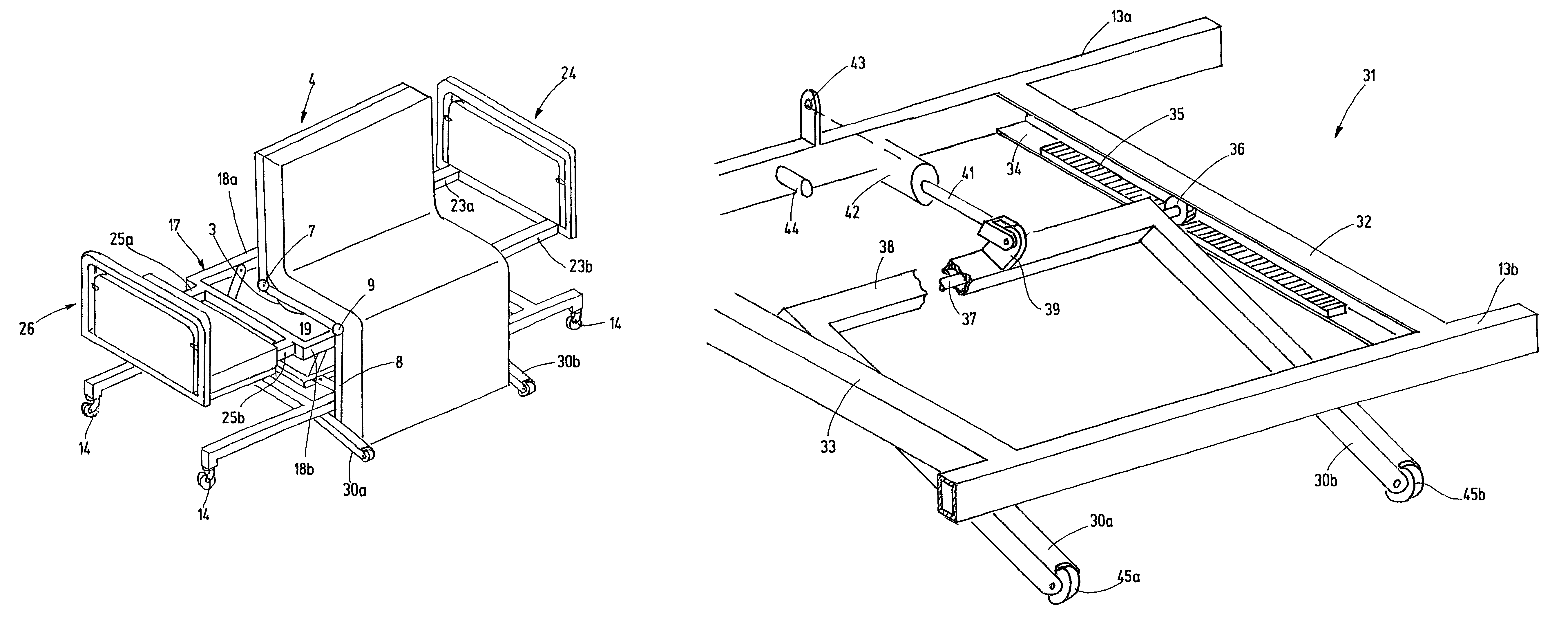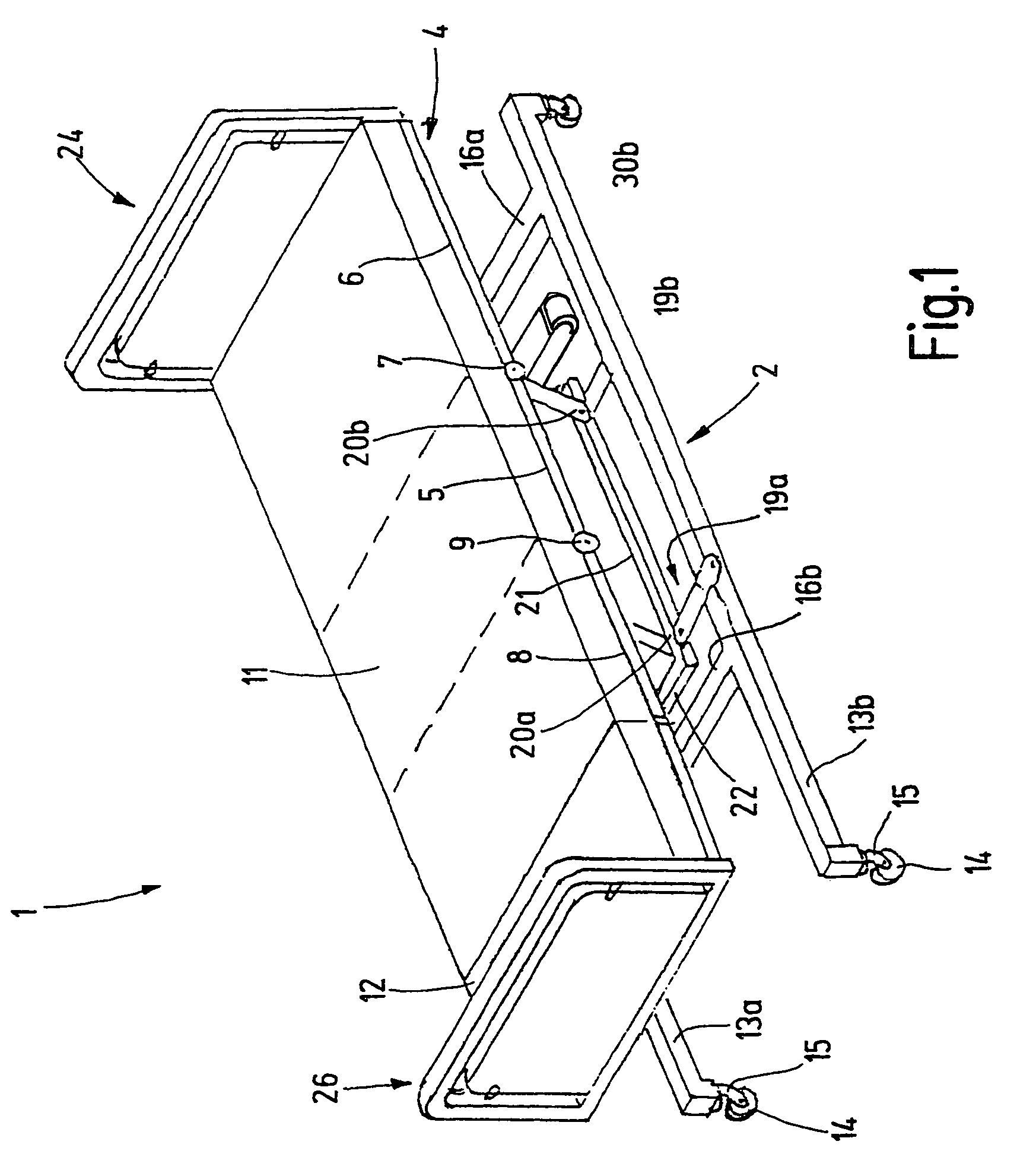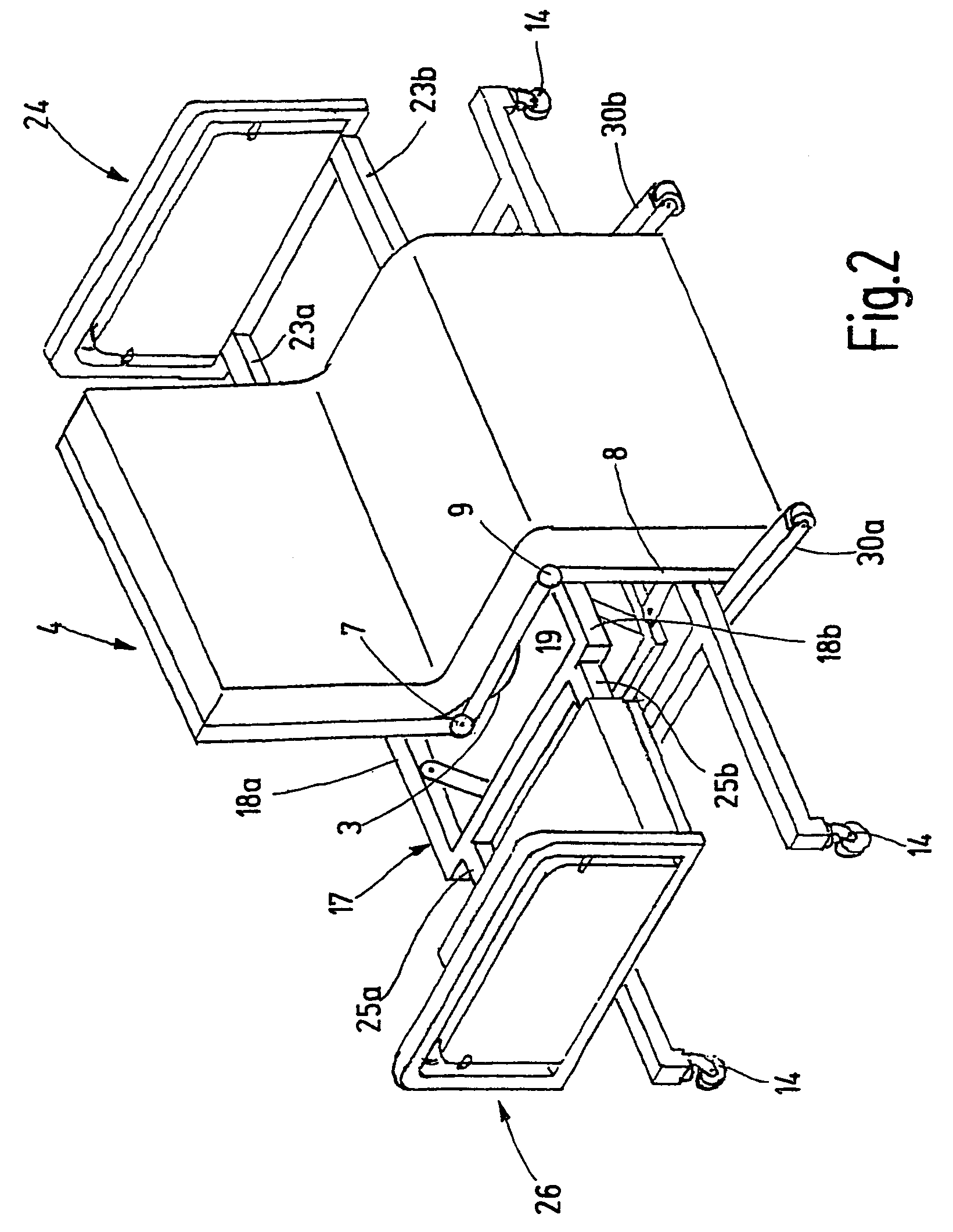Rotating bed with improved stability
a technology of rotating beds and stability, applied in the field of rotating beds, can solve the problems of not being able to project in the lateral direction beyond the structure of the bed frame in the lateral direction, unable to reach the stability limit, and unable to completely tip, so as to achieve the effect of improving stability
- Summary
- Abstract
- Description
- Claims
- Application Information
AI Technical Summary
Benefits of technology
Problems solved by technology
Method used
Image
Examples
Embodiment Construction
[0033]Referring now more particularly to FIGS. 1 and 2 of the drawings there is shown an illustrated rotating bed 1 embodying the present invention that is particularly adapted for use in nursing homes or hospitals. The rotating bed basically comprises a height-adjustable base 2 that stands on the floor and carries a rotary mechanisms, as depicted in FIG. 2, at its upper end. A bed frame 4 is supported on the rotary mechanism 3 for rotational movement about a vertical axis of the rotary mechanism. The bed frame 4, of which only the longitudinal rails are visible in the respective figures, is divided into at least three sections.
[0034]A center or central section 5 of the bed frame 4 is directly connected to the upper end of the base 2 by means of the rotary mechanism 3. A back section is coupled to the upper end of the central section 5 with the aid of two hinges 7 that are aligned with one another and interconnect the rails of the respective sections. The two hinges 7 make it possib...
PUM
 Login to View More
Login to View More Abstract
Description
Claims
Application Information
 Login to View More
Login to View More - R&D
- Intellectual Property
- Life Sciences
- Materials
- Tech Scout
- Unparalleled Data Quality
- Higher Quality Content
- 60% Fewer Hallucinations
Browse by: Latest US Patents, China's latest patents, Technical Efficacy Thesaurus, Application Domain, Technology Topic, Popular Technical Reports.
© 2025 PatSnap. All rights reserved.Legal|Privacy policy|Modern Slavery Act Transparency Statement|Sitemap|About US| Contact US: help@patsnap.com



